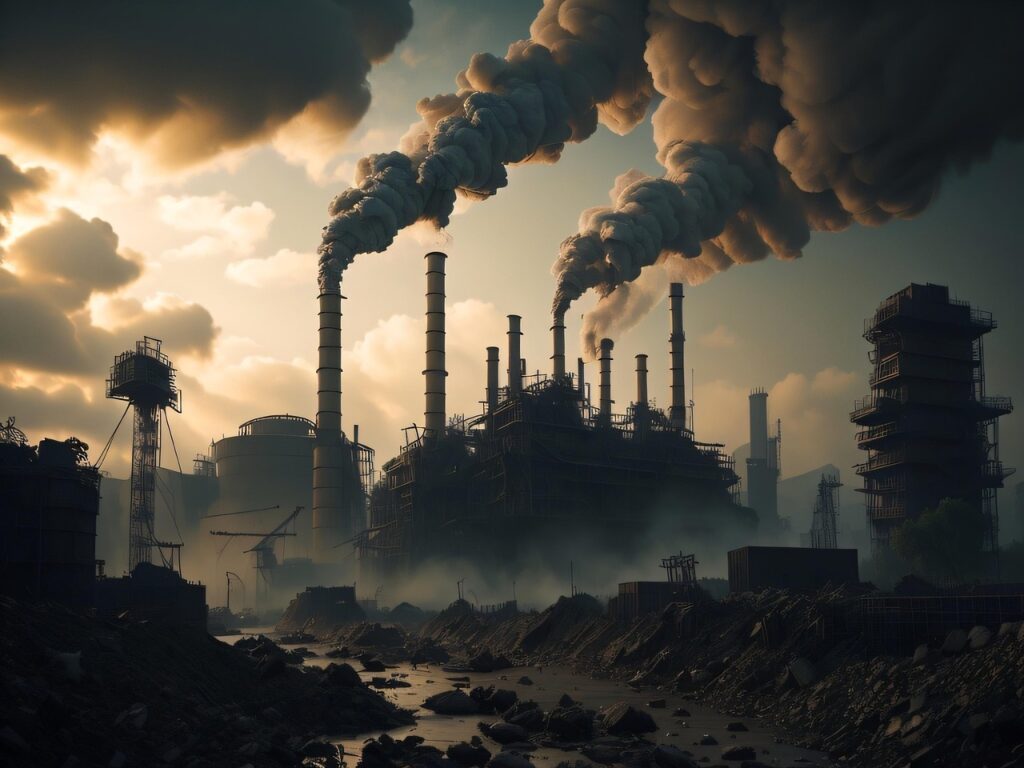1970 America was a much more hazardous and toxic place than the country we now live in. Every major US city was poisoned with toxic emissions as carbon monoxide from car engines filled the air. Untreated sewage was dumped into waters and lakes. Some rivers were so polluted that they regularly caught on fire. Steel mills in cities like Pittsburgh and Birmingham blackened the skies with heavy pollution; lead and mercury contaminants in the environment were causing brain damage. The primary source of electricity production was coal, which filled the air with sulfur dioxide and particulates that poisoned people’s lungs. Ozone pollution in the atmosphere and acid rain blighted crops.

The damage to the environment was high on the list of concerns for people of every political persuasion. In reaction to popular pressure, President Richard Nixon sent a groundbreaking message on the environment to the House and Senate in that year, asking for improved water treatment facilities, national air quality standards and the lowering of motor vehicle emissions standards, a clean-up of federal facilities that had fouled air and water, legislation to end the dumping of wastes into the Great Lakes, a tax on lead additives in gasoline, and a plan to tighten safeguards on transportation of oil, with a plan for the treatment of oil spills. Nixon also created a council to consider how to organize the federal government pollution programs that were created to address the issues laid out in his message on the environment.
The council recommended consolidating environmental responsibilities under one new organization: the Environmental Protection Agency (EPA).
The Environmental Protection Agency has the capacity to do research on important pollutants of every kind, and on the impact of these pollutants on the total environment. The EPA monitors the condition of the environment — biological as well as physical. With that data, the EPA can establish quantitative environmental baselines – critical if we are to measure adequately the success or failure of our pollution abatement efforts.
However, under the current administration, the EPA is planning to eliminate long-standing requirements for polluters to collect and report their emissions, including the heat-trapping gases that cause climate change. The move will affect thousands of industrial facilities across the country, including oil refineries, power plants and coal mines as well as those that make petrochemicals, cement, glass, iron and steel. Losing the data will make it harder to know how much climate-warming gas an economic sector or factory is emitting and to track those emissions over time.
In March, the administration announced that it had canceled 400 grants totaling $1.7 billion whose goal was to improve air and water quality and prepare communities for more extreme weather events, along with $20 billion in grants for programs to reduce air pollution and support affordable clean energy. The administration also plans to cut the EPA’s budget by 65 percent, which will make it difficult if not impossible for the agency to fulfill its mission of protecting public health. Plans were also proposed that will abandon environmental protections, including air quality standards for smog, soot, and air toxics as well as emission requirements for power plants, vehicles, coal waste, and oil refineries.
The agency’s website reflects this new attitude. A press release from the new EPA administration states “U.S. Environmental Protection Agency (EPA) Administrator Lee Zeldin announced the agency will undertake 31 historic actions in the greatest and most consequential day of deregulation in U.S. history”. Review of past versions of the website at epa.gov show that the main menu link to a section on Climate Change has been removed; while the page still exists, it’s now more difficult to find, and a paragraph has been removed that read “EPA is committed to protecting the environment and public health in low-income, tribal and other overburdened communities by integrating environmental justice in all programs, policies and activities. Learn more about environmental justice and the disproportionate impacts of climate change.”
The section of the website covering Environmental Justice has been entirely removed. The end of the EPA’s diversity, Equity and Inclusion (DEI) and environmental justice programs – which seek to ensure a healthy environment for minority groups that often live closest to sources of contamination – will be most felt in Black, Hispanic and Native American communities.
However, there is resistance to the dismantling of the protections that keep people and lands protected and safe. A coalition of labor, environmental groups and local governments has filed a complaint in a federal court in California, based on the unconstitutionality of the moves the government has been making.
Even so, some of the damage being done now to scientific research and the dismantling of curbs on industrial pollution will have effects that will take years to recover from. The environmental disaster that was the everyday condition in the United States in the 1970s could be on the horizon if changes are not made soon.
References:
- These are the impacts some scientists fear most from EPA deregulation
- How Gutting the EPA’s Research Team Could Impact Clean Air and Water Rules
- As Trump’s EPA ends ‘environmental justice,’ minority communities may pay a price
- Trump’s EPA Plans to Stop Collecting Greenhouse Gas Emissions Data From Most Polluters
- The Origins of EPA